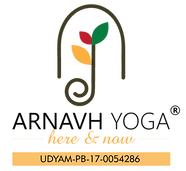1.34 Mind Your Breath
- Jul 10, 2022
- 3 min read
Updated: Feb 15, 2023
YOGA SUTRAS OF PATANJALI | CHAPTER 1 - SAMADHI PADA | VERSE 34 | COMMENTARY
Pracchardana-vidharnabhyam va pranasya.
प्रच्छर्दनविधारणाभ्यां वा प्राणस्य ॥१.३४ ॥
Pracchardanavidha̅raṇa̅bhya̅ṁ va̅ pra̅ṇasya || 1.34 ||
By changing the pattern of the breath – holding the breath out (One can bring the mind under control and keep it peaceful).

An experiment was conducted at the Menninger Foundation, USA on Swami Nadabrahmananda Saraswati, an Indian Classical Musician who had perfected the science of Thaan. He became a disciple of Swami Sivananda Saraswati in his later years. The experiment intended to verify his claim that he could stay without breathing for long periods of time.
He was placed in an airtight chamber, with his nose and ears blocked and body smeared with wax. He had his Tabla with him. An alive monkey and a burning candle were placed in similar chambers. After 3 minutes, the candle flamed out, and after another 10 minutes, the monkey fell unconscious, but Swamiji continued playing the Tabla. There was a coin placed on the top of his shaved head which kept bobbing up and down. He played the Tabla for 40 minutes without breathing. He explained that he controlled the flow of Prana inside his body and one lives as long as Prana exists even if one is not breathing.
The Pranic Body envelopes the physical body and it is responsible for all functions of the body. Breath is the bridge between the Gross/Physical Body and Pranic Body. Through the ages, Pranayama has been one of the fundamental parts of the Yogic practices. Enlightened Masters have taught various breathing techniques to control the Prana and hence control the mind. The Yogic texts say there are 72000 nadis or pranic channels in the subtle body through which Prana flows. One Prana assumes different forms in different parts of the body to fulfil different functions. If the Prana flows unobstructed, the body-mind complex stays healthy.
Some of the most popular Pranayamas in current times are Nadi Shodhan Pranayama, Kapal Bhati Pranayama, Ujjayi Pranayama, Bhastrika Pranayama, and Bhramari Pranayama. The above sutra explains one of the techniques of Pranayama (Bahir Kumbhaka – holding the breath outside), but it essentially refers to the connection between mind, prana and breath. The breath can be understood as gross form of Prana, which everyone can work with to develop control over the subtle Prana.
The breath is to the mind what string is to a kite. It is the breath which needs to be controlled to perfect any skill - music, sports, martial arts, academics, etc. The breath is the secret to a lively life. You can do a small experiment to confirm this – take long deep breaths (both inhalation and exhalation) in a relaxed manner and see the state of your mind. Then, take hurried breaths, as if you are scared. The pattern of the breath immediately affects the state of the mind. The cause and effect are intertwined – the state of the mind affects the breath but we are usually too caught up with the mind to notice it – the state of the breath affects the mind. If we become a little aware, and develop control over the mind, we can also handle the thoughts better.
Learning a Pranayama from a Master and practicing it diligently can bring supernatural awareness in the mind. One can control which thought stays and which one passes, and build laser like focus. It is one of the most powerful methods to be disease free physically, emotionally and mentally, achieve great things in life and ascend to higher states of living.


What is the source of this research at Menninger? It is found in the same words on many publications. Would like to find the published research please